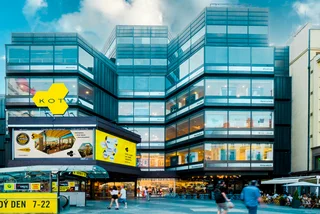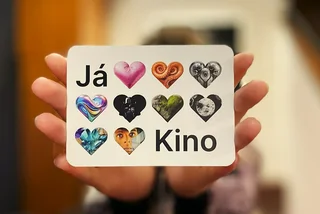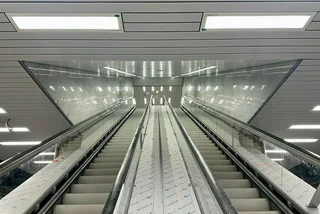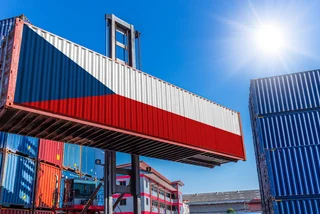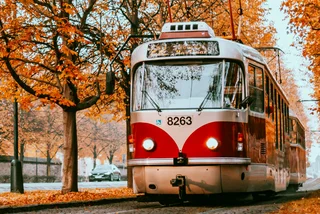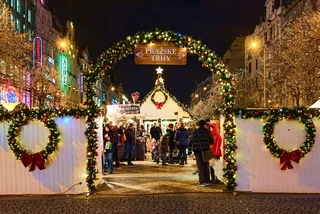Renovation work on Prague’s iconic Kotva department store officially began today, exactly 50 years after its grand opening. The project, led by owner Generali Real Estate, aims to modernize the Brutalist landmark while preserving its architectural integrity. The redevelopment is expected to be completed by late 2027; the department store has been closed since early last year.
Designed by architects Vladimír and Věra Machonin, Kotva opened in 1975 after five years of construction. Its distinctive hexagonal layout—resembling a honeycomb—and use of prefabricated elements made it a standout example of structuralist architecture. At the time of its opening, Kotva was the largest department store in Czechoslovakia and the fifth largest in Europe.
PARTNER ARTICLE
The five-floor building was co-constructed by Swedish firm SIAB, making it a rare example of Western-influenced architecture under the communist regime. However, it did not sell Western-produced goods until after 1989. Notably, the Machonins were not invited to Kotva’s opening ceremony due to their falling out with the communist government.
Curator Marie Kordovská, the architects’ granddaughter, noted in Earch magazine that Kotva was “a flagship of socialism, whose architecture was built on progressive Western ideas.”

"Kotva was not just a department store but also an example of bold and innovative architecture," said Jana Vrábelová, head of project management for Central and Eastern Europe at Generali Real Estate. "Our aim is to restore the functionality of this space while preserving its aesthetic value and historical legacy."

The renovation plans include refurbishing the building’s interiors, expanding retail and office spaces, and restoring the original façade. The signature hexagonal design and exposed concrete towers will remain intact.
The project has been developed in cooperation with heritage preservation authorities, including the Prague City Hall and the National Heritage Institute. Kotva has been an official Czech cultural monument since 2019.

Developers aim to find a balance between Kotva’s historical identity and its evolving commercial role. While preserving its architectural vision, they plan to integrate modern office space, reflecting changing market demands.

Kotva has faced challenges in recent decades, struggling to compete with newer shopping centers and experiencing legal disputes over ownership. The Irish company Markland acquired it in 2005 but abandoned renovation plans due to the financial crisis. In 2016, it was purchased by Czech developer PSN before being acquired by Generali Real Estate in 2020.

Alongside the store’s refurbishment, the surrounding area will undergo revitalization, overseen by the Prague Institute of Planning and Development. The redevelopment aims to breathe new life into this historic commercial hub while ensuring that Kotva retains its legacy as one of Prague’s most distinctive architectural landmarks.
"In recent years, desperate attempts to attract visitors have often overlooked architectural integrity, as seen with last year’s controversial Máj renovation. Now, Kotva, too, will mark its milestone with reconstruction. Whether this transformation honors its original vision or follows the same path as its longtime counterpart remains to be seen," writes Kordovská.












 Reading time: 2 minutes
Reading time: 2 minutes 


